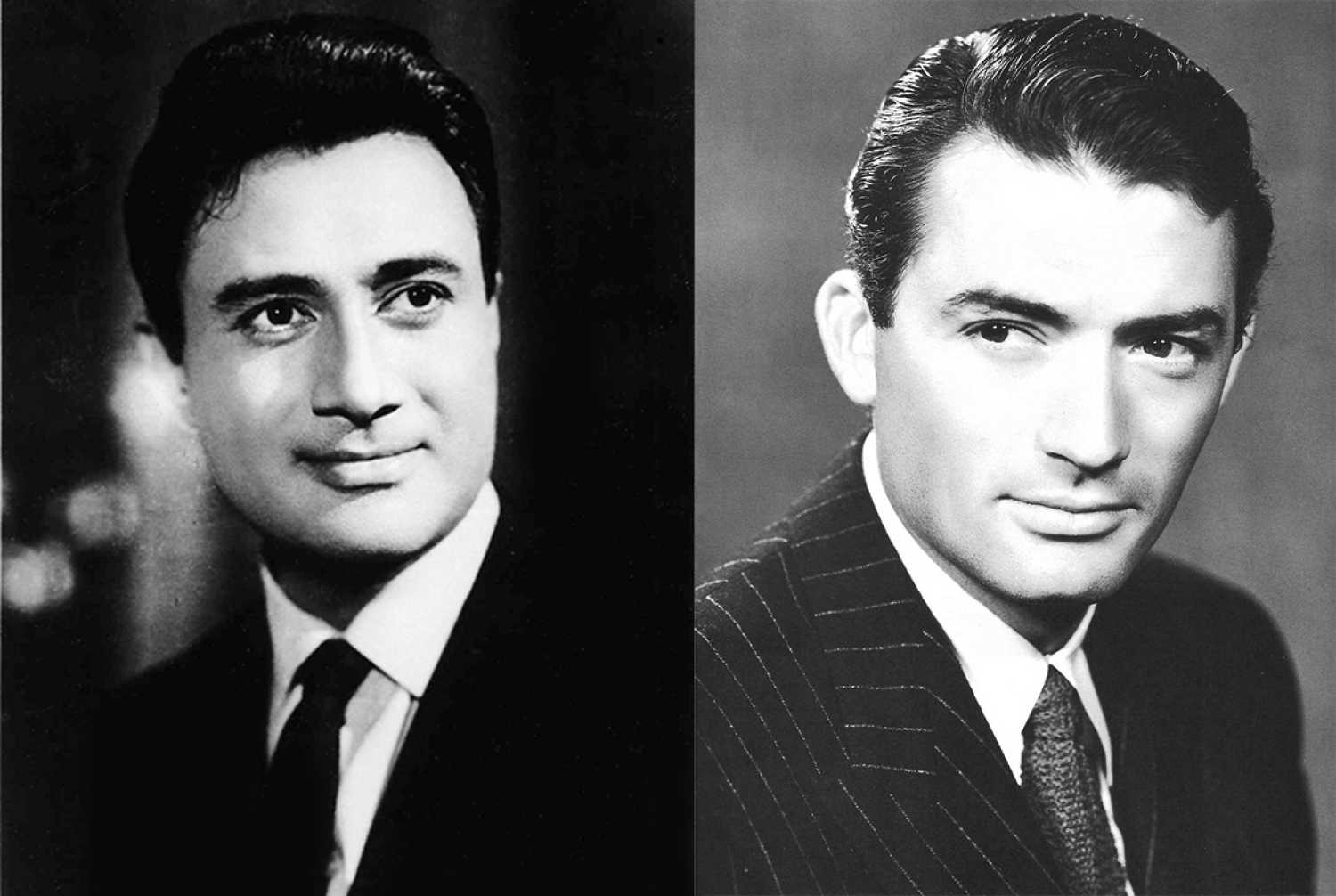The evergreen star of Hindi cinema was often compared to the handsome Hollywood actor when he first began his career. On his 93th birth anniversary today (26 September), we take a look back to see how that came to be.


Sonal Pandya
In the heyday of the black and white Hindi cinema, the industry was ruled by a trio of leading men — Raj Kapoor, Dilip Kumar and Dev Anand. Each of them were obviously competing with one another, but they all had their own individual traits and fan followings. Kumar was the ‘actor’, one who even this current generation still emulates, Kapoor was the ‘auteur’ who left an indelible mark with the films he directed and finally Anand was the ‘charmer’, a fashionable romantic hero.

One of his co-stars, Suraiya, was the top actress of her time and dual threat. Her melodious voice was first used by Naushad in Sharda (1942) and she was an in-demand heroine of the 1940s and 1950s. She agreed then to appear with an up-and-coming actor, Anand, and promptly fell for him during the shooting of Vidya (1948). Anand wanted to propose to Suraiya, but due to strong opposition from her family and several others from the industry, the two were forced to part. He had even purchased a ring at one point!
During their courtship, Suraiya mentioned to Anand, his uncanny resemblance to her favourite Hollywood actor, Gregory Peck. In a 1972 interview with Stardust, Suraiya had said, “People said that I fell in love with Dev because I thought he resembled Gregory. Actually it all started in fun when cutting jokes with Dev, I teased him and said that he looked like Gregory. The unit too began to tease him. Until Dev himself began to believe that he resembled him. He even started copying a few of his mannerisms!”
Unconsciously maybe then, began a period when Anand became India’s Gregory Peck. There are many who feel Anand began to imbibe Peck’s sense of style — from his well-tailored suits to his hairstyle and even how he held a cigarette!

Peck was a true Hollywood icon, loved around the world and known for his work in Roman Holiday (1953) with Audrey Hepburn and the classic The Guns of Navarone (1961). He later was so closely associated with his role of Atticus Finch in 1963’s To Kill A Mockingbird that many people assumed that the character and the actor were one and the same.

The amiable star also came down to India a couple of times when he was shooting for The Purple Plain (1954) in neighbouring Sri Lanka. Peck met Suraiya at her house during one visit to the country and even caught up with Anand at a party. Anand ended up meeting Peck two more times on the film sets of Roman Holiday and Moby Dick (1956) abroad.
Anand, too, acknowledged their association in interviews that he gave. At the time, he stated, “Gregory was a suave, debonair star. And my then girlfriend, Suraiya, who was also a big star, was his devout fan. People wrote as much about how I modelled myself on her dream hero as much as they wrote about our romance. I must have done that subconsciously. People enjoyed reading it and I, a newcomer, relished the tag.”

But in later years, as both industries changed, the tag used very rarely. The movies shifted to colour and so did the content in the films. With his home banner, Navketan, Anand began to work in films like Guide (1965) and Jewel Thief (1967). His heroines grew younger and younger, and his style evolved, he was mostly seen with his trademark hat and scarf as he eventually moved more towards direction. But for those who had seen the early films of Anand, the comparisons still remained.


